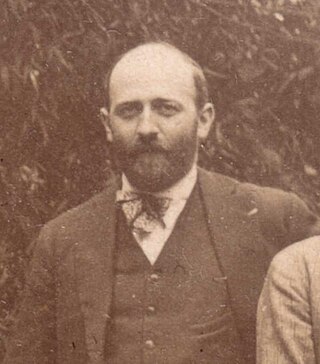Jean-Marie Londeix (20 September 1932) is a French saxophonist born in Libourne who studied saxophone, piano, harmony and chamber music. [1] [2]
Jean-Marie Londeix (20 September 1932) is a French saxophonist born in Libourne who studied saxophone, piano, harmony and chamber music. [1] [2]
Jean-Marie Londeix began his saxophone study with bassoonist Jules Ferry at the Bordeaux Conservatory. He later studied with Marcel Mule at the Paris Conservatory. [3] He also studied with Fernand Oubradous and Norbert Dufourcq, among others. He then served as the saxophone instructor at the Conservatory of Dijon for 18 years. He retired from the Conservatoire de Bordeaux, France in 2001.
Jean-Marie Londeix won an international saxophone competition when he was 15 years old.[ citation needed ]
He is the founder of the "French Saxophonists Association" and the "International Saxophone Committee."
More than 100 varied compositions have been written specifically for him, and he has published several pedagogical works. Some famous saxophone players who have studied with him include Matthew Patnode, Richard Dirlam, Perry Rask, Russell Peterson, Ryo Noda, Jan Baker, James Umble, Robert Black, Susan Fancher, Ross Ingstrup, William Street, Christian Lauba and Jack Kripl (winner of the prize for Saxophone at the International Competition for Musical Performers in Geneva Switzerland, 1970).
Selected former students:
Selected works:
Denisov, Edison: Concerto piccolo (1977); Sonate (1970) premiered at the 1970 World Saxophone Congress [4]
Dubois, Pierre-Max: Concerto (1959), Hommage à Hoffnung (1980), Le Lièvre et la Tortue--Impromptu (1957), Pièces caractéristiques(1962)
Noda, Ryo: Don Quichotte, op. 2; Improvisation I (1972), Improvisation II (1973); Improvisation III (1974)
Robert, Lucie: Strophes (1978)
Rossé, François: Le frène égaré (1978–79). Etude en balance, Lobuk constrictor (1982), Spath (1981)
Sauguet, Henri: L'arbre (1976–80), Oraisons (1976), Sonatine bucolique (1964)

The saxophone is a type of single-reed woodwind instrument with a conical body, usually made of brass. As with all single-reed instruments, sound is produced when a reed on a mouthpiece vibrates to produce a sound wave inside the instrument's body. The pitch is controlled by opening and closing holes in the body to change the effective length of the tube. The holes are closed by leather pads attached to keys operated by the player. Saxophones are made in various sizes and are almost always treated as transposing instruments. A person who plays the saxophone is called a saxophonist or saxist.
Marcel Mule was a French classical saxophonist. He was known worldwide as one of the great classical saxophonists, and many pieces were written for him, premiered by him, and arranged by him. Many of these pieces have become staples in the classical saxophone repertoire. He is considered to be the founder of the French Saxophone School and the most representative saxophone soloist of his time, being a fundamental figure in the development of the instrument.

Edison Vasilievich Denisov was a Russian composer in the so-called "Underground", "alternative" or "nonconformist" division of Soviet music.

Eugene Ellsworth Rousseau was an American classical saxophonist. He played mainly the alto and soprano saxophones, though early in his career he was equally active as a clarinetist.
Tableaux de Provence is a programmatic suite composed by Paule Maurice between 1948 and 1955 for alto saxophone and orchestra, most often performed with piano accompaniment only. The work was dedicated to French saxophone virtuoso, Marcel Mule. The movements describe the culture and scenery of Provence, southeast France, where the Mules, Paule Maurice, and her husband, composer Pierre Lantier, spent vacation time together. Tableaux de Provence was first recorded by Marcel Mule in 1957 on the Selmer release Marcel Mule, with Solange Robin on piano. It was premiered on December 9, 1958 by Jean-Marie Londeix with the Orchestre Symphonique Brestois.
Paule Charlotte Marie Jeanne Maurice was a French composer.
Theodore Kerkezos is a Greek classical saxophonist. He is “…one of the most astounding performers of the day.” Gramophone

Paul Brodie, was a Canadian saxophonist, pupil of Larry Teal and then Marcel Mule. In 1994, he was made an Officer of the Order of Canada, Canada's highest civilian honour, for having "shown true mastery of his art through his ability to reach all ages with his music".
Ryō Noda is a Japanese composer and musician. He has written several classical works for the saxophone.

Alexis Fernand Félix Jean Rivier was a French composer of classical music in the neoclassical style.
(Guillaume) Guy Lacour was a French composer of classical music, and a tenor saxophonist.
The Concerto in E flat major for alto saxophone and string orchestra, Op. 109, was written by Alexander Glazunov in 1934. The piece lasts about fourteen minutes and is played without pause. It is deeply rooted in Romanticism, and has entered the standard saxophone repertoire.
Jeanine Rueff was a French composer and music educator.

Thierry Joseph-Louis Escaich is a French organist and composer.

Arno Bornkamp is a Dutch classical saxophonist, the professor of the Conservatory of Amsterdam, and is considered an influential soloist in the classical repertoire.
Daniel Deffayet was a French classical saxophonist. He was the professor of saxophone at the Conservatoire de Paris where he succeeded Marcel Mule after Mule's retirement in 1968. He held this position until 1988.
François Daneels was an internationally renowned virtuoso classical saxophonist, a prolific composer, and music educator from Belgium. From 1954 to 1981, Daneels was professor of saxophone at his alma mater, the Royal Conservatory of Brussels.

Claude Pascal was a French composer.
Pierre Petit was a French composer.
Christian Lauba is a Tunisian-born French composer and teacher, especially noted for his compositions for saxophone. His compositions often incorporate the music of his native North Africa as well as Japanese influences. He sometimes composes under the name of Jean Matitia, particularly for jazz and rag music.